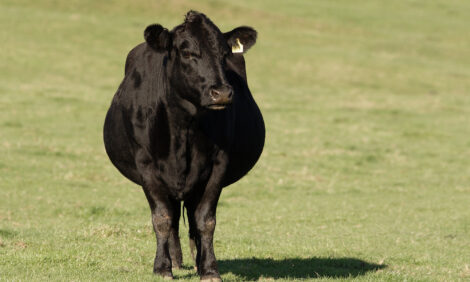



CattleFax: Liquidation Permeates All US Cattle Segments
ANALYSIS - US-based CattleFax analysts told attendees at the National Cattlemen's Beef Association conference that beef cow liquidation at the cow-calf level has permeated every segment of the US cattle and beef industry, writes Sarah Mikesell, TheCattleSite senior editor.Total cattle numbers have declined more than 7 million head in the past six years and are now below 90 million head for the first time since the early 1950s. Despite a slowing contraction in 2012, the 2013 beef cowherd declined 860,000 head and is at a near-term low of 29.3 million cows.
CattleFax expects total cow slaughter to decline by 600,000 head in 2013 as more heifers are retained with the assumption that US precipitation will improve.
2013 Weather Outlook
Meteorologist Art Douglas, Creighton University, expects a warm, dry spring across the US Southwest as a high pressure ridge builds across the region and pushes the polar jet north.
The Midwest spring is expected to be warm with normal to slightly above normal precipitation, which will support early field work. However, by late spring, a cooler and wetter pattern could slow down late planting and early germination of the crop.
In the Plains, winter wheat precipitation is expected to be spotty through June and a very dry May could keep yields below normal. The Pacific Northwest should see above normal precipitation but slightly below normal temperatures.
The summer weather outlook is uncertain. The best summer scenario is that La Nina conditions will not return to the central US for a third summer. The Central Plains dry soils are expected to keep the region slightly warmer and drier, due to soil moisture feedback, but a strong drought high is unlikely this summer.
US Beef Exports & Imports
CattleFax analysts said higher US grinding beef prices in 2013 will continue to support prices for end and thin meats, pricing overall beef exports higher.
The newly expanded access to Japan will increase beef exports in 2013. CattleFax expects to see total beef exports increase 3 percent in 2013, with exports to Japan improving 27 per cent.
Mexico fell to the No. 3 market spot in 2012 as higher round prices discouraged export sales, and this trend is expected to continue in 2013.
US beef imports are expected to increase due to firmer demand for lean grinding beef.
Australian beef production will be at a near-record high allowing ample 2013 export supplies.
A US cow slaughter decline of about 600,000 head is forecast in 2013, which will stimulate increased import demand.
How to Stop Further Contraction?
Without question, the best remedy for the cattle industry is relief from the drought conditions that plagued the US in 2012.
CattleFax said record-high input prices and herd contraction can only ease if precipiation reaches much of the US and even then, supply recovery will take time. Plus, improved weather conditions are by no means an absolute for all regions of the cattle industry.
To read more coverage on the NCBA Conference and CattleFax Outlook Session, watch Headline News & Analysis over the next few weeks.
Pictured above: Randy Blach, CEO of CattleFax, spoke to NCBA attendees during the CattleFax 2013 Industry Outlook. The conference was held February 6-9, 2013 in Tampa, Florida.



